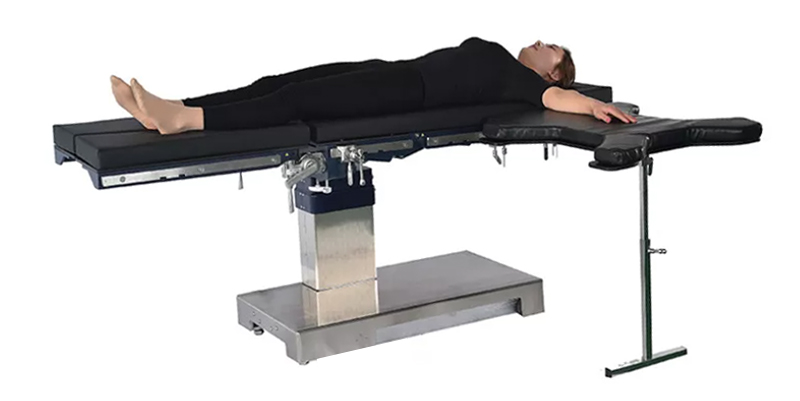

Introduction
In orthopedic and microsurgical procedures involving the upper extremities, precision, stability, and access are paramount. A surgical hand table is an essential piece of operating room equipment that provides a stable platform for hand and arm surgeries. This article explores the design, functions, and benefits of surgical hand tables, helping surgeons and medical facilities make informed decisions.
What Is a Surgical Hand Table?
A surgical hand table is a specially designed extension to the operating table, typically mounted on the side or at the end, to support the patient's arm or hand during surgery. It provides enhanced ergonomics and allows for better surgical exposure and maneuverability, particularly in orthopedic, plastic, and reconstructive procedures.

Key Features and Types of Surgical Hand Tables
1. Radiolucent Material: Most modern surgical hand tables are made of carbon fiber or other radiolucent materials, allowing for intraoperative imaging such as fluoroscopy or C-arm X-rays without repositioning the patient.
2. Adjustable Height and Angle: Surgeons benefit from tables that can be raised, lowered, or tilted to optimize access and visibility.
3. Weight Capacity and Stability: High-quality tables can support significant weight while maintaining complete immobility, which is critical during intricate procedures.
4. Attachment Mechanism: Surgical hand tables may attach via clamp systems, side rail locks, or cantilevered support structures. Quick setup and secure locking mechanisms are essential for surgical efficiency.
5. Mobility and Storage: Some mobile models can be moved between operating rooms. Others are foldable or compact for easy storage.
Common Applications in Surgery
- Hand and Wrist Surgery: Carpal tunnel release, tendon repair, and fracture fixation.
- Forearm Procedures: Especially when precise positioning is needed for internal or external fixation.
- Microsurgery: Where the stability of the limb is vital for operating under magnification.
- Pediatric Orthopedic Surgery: Adjustable tables offer added safety and convenience for treating children.
Advantages of Using a Surgical Hand Table
- Improved Patient Safety: Minimizes patient movement and optimizes positioning, reducing the risk of intraoperative complications.
- Enhanced Surgeon Ergonomics: Allows surgeons to work more comfortably and effectively for prolonged procedures.
- Facilitates Imaging: Radiolucent surfaces enable real-time imaging during surgery, which is critical for accurate placement of implants and instruments.
- Increased Efficiency: Reduces setup time and the need for additional supports or improvisation.
Choosing the Right Surgical Hand Table
When selecting a surgical hand table, hospitals and surgical centers should consider:
- Compatibility with existing OR tables
- Radiolucency level
- Ease of attachment and detachment
- Durability and cleaning protocols
- Manufacturer support and warranties
Maintenance and Cleaning Guidelines
To ensure longevity and sterility, surgical hand tables should be cleaned with medical-grade disinfectants and regularly inspected for wear and tear. Hinges, joints, and locking mechanisms should be lubricated and tested before each use.
Conclusion
A high-quality surgical hand table is a critical asset for any facility that performs upper extremity surgeries. By improving stability, access, and patient safety, it enhances surgical outcomes and operational efficiency. As the demand for orthopedic and microsurgical interventions continues to rise, investing in advanced hand table systems can significantly benefit both patients and surgical teams.
References
1. American Academy of Orthopaedic Surgeons (AAOS). "Operating Room Setup for Upper Extremity Surgery." https://www.aaos.org
2. Journal of Hand Surgery. "Improved Positioning with Specialized Hand Tables in Wrist Arthroscopy."
3. Zimmer Biomet Surgical Solutions. Product Specifications.
4. Medtronic Surgical Equipment Guidelines.
5. MedlinePlus. "Hand Surgery Overview." https://medlineplus.gov/handsurgery.html